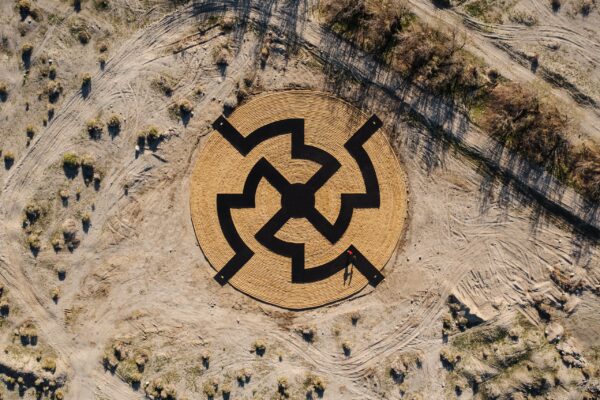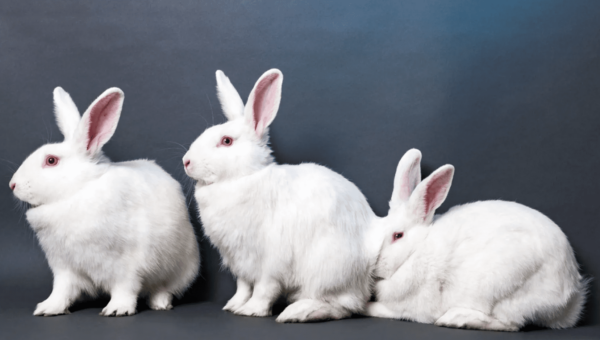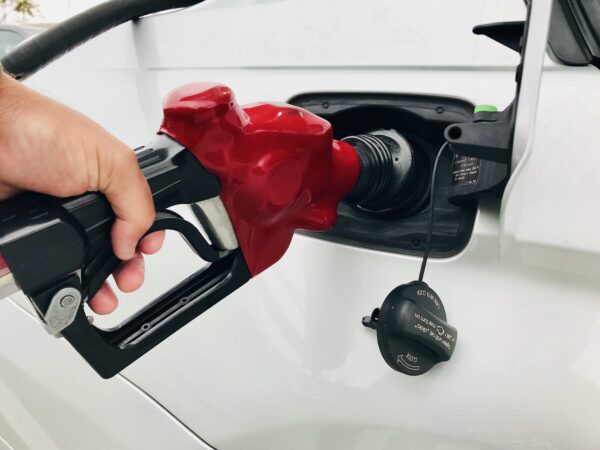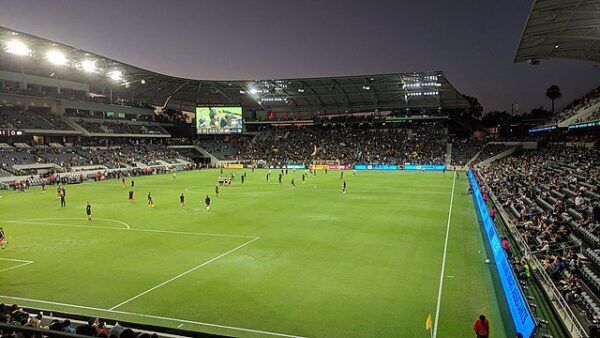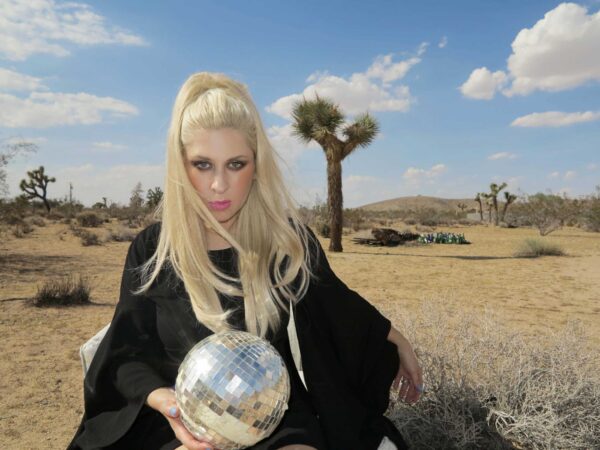Desert X, a biennial outdoor art exhibition in the Coachella Valley featuring a dozen artists from Europe, North America and South Asia will begin Saturday.
The immersive works including sculpture, painting, writing, architecture, design, film, music, performance, choreography, education and environmental activism will be displayed until May 7, according to a statement from Desert X.
“There’s a saying attributed to the Kwakwaka’wakw nation that a place is a story happening many times,” Desert X’s Artistic Director Neille Wakefield said in a statement. “This idea of place as the multiplicity of stories flowing through it is central to Desert X. Artists are an essential part of this understanding and the ideas they bring to it irrigate our perception of place, nourishing the narratives already there and propagating those that have yet to be told.”
Participating artists who will deploy their artwork across the Coachella Valley are:
— United Kingdom-based artist Rana Behum with “Chainlink,” a structure appearing as a shimmering pyramidal haze of color or a chain link fence floating above the desert floor and spread across the valley.
— United States-based artist Lauren Bon with “The Smallest Sea with the Largest Heart,” a poetic object to remind viewers of society’s capacity to destroy, their connection to water and that the desert was once a sea.
— U.S.-based rancher, artist and educator Gerald Clarke with “Immersion,” a giant board game with a goal to reach the center by answering questions about the traditions and histories of the Cahuilla Indians and other sovereign cultures.
— Mexico-based artist Paloma Contreras Lomas with “Amar a Dios en Tierra de Indios, Es Oficio Maternal,” a Western-meets-scifi, audio-visual tour of a landscape featuring a dated car screeched to a halt and an array of tangled limbs from two mysterious characters in an effort to push back at the violent male gaze of the landscape.
— U.S.-based artist Torkwase Dyson with “Liquid a Place,” part of an ongoing series featuring a sculptural installation that engages people as liquid beings seeking new forms.
— Mexico-based artist Mario Garcia Torres with “Searching for the Sky (While Maintaining Equilibrium),” a herd of mechanical bulls designed to make people fall and becoming a macho celebration of failure.
— United Kingdom and India-based artists Himali Singh Soin and David Soin Tappeser with “Namak Nazar,” immersive audio-visual environments inviting people to think through ecological loss and the loss of home.
— U.S.-based artist Matt Johnson with “Sleeping Figure,” a cubist rendition of classical odalisque featuring shipping containers and the harem to which they belong.
— U.S.-based artist Tschabalala Self with “Pioneer,” an equestrian statue serving as a visual representation of the birthright and place of Native and African American women within the American landscape.
— Bangladesh-based artist Marina Tobassum with “Khudi Bari,” a modular mobile home that is low cost, durable and can be assembled and disassembled to address the role of design amidst the world’s climate conditions.
— Mexico-based artist Hector Zamora with “Chimera,” a performative action transforming street vendors into walking sculptures made of balloons to question the everyday uses of materials and functions of space.
“In a time of global crisis, many of the artists have created spaces of freedom and possibility, suggesting new ways to build healing cultures of care that embrace and protect (bio)diversity, opening up opportunities for joy and hope anchored in justice,” Desert X co-curator Diana Campbell said in a statement.
“Immersing ourselves in the stories of place also awakens us to its mythologies, whether they be religious texts and oral traditions across multitudes of belief systems that see us creating vessels to escape the flood as well as being cast into the arid wilderness to test the limits of existential and spiritual survival.”

